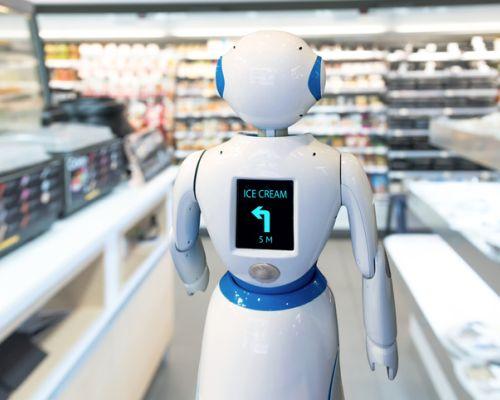Three Reasons Voice AI is Becoming Ubiquitous in the In-Store Retail Experience
The death of traditional retail has long been predicted with the introduction of e-commerce and new technologies heralding the beginnings of the “retail apocalypse.” Yet, despite the doom and gloom forecasts, 2018 was a good year for retail with the National Retail Federation (NRF) reporting roughly 4% growth across the industry. Instead of fighting for their lives, retail leaders are looking for ways to continue driving growth by improving customer experience and loyalty; and many are turning to artificial intelligence (AI) and voice technology to accomplish this. This push towards in-store voice assistants will be driven by three items:
The regular use of AI across business units
AI has become a critical tool for nearly every industry. In fact, a Gartner survey showed that 37% of organizations have implemented AI in some form in 2019, compared to just 10% four years ago. The retail industry is no different. By 2024, the use of AI technologies in retail is expected to exceed $8 billion according to Global Market Insights and 28% of retailers have already deployed AI in their operations according to the Capgemini AI in Retail Report. Common AI use cases in retail include AI for procurement tasks and optimizing supply chain routes, but retailers are also anticipating the further use of artificial intelligence to build better customer relationships, generate higher sales and ultimately improve customer satisfaction.
The need to improve the customer experience
Despite the recent resurgence of brick and mortar sales, retailers must constantly be looking to improve customer experience and convenience. Amazon just announced that their prime shipping is reducing from two days to one, continuing to move the e-commerce experience closer to the instant gratification that makes in-store shopping so appealing. In a direct response to Amazon’s shipping infrastructure and Amazon Go stores, Walmart has begun introducing AI-powered locations that streamline both the restocking and purchasing experience for the customer.
Leveraging voice AI in the store is the natural progression of these digitized locations. Conversational interfaces are objectively faster than typing and allow in-store experiences to be simplified or enhanced. For instance, a smart mirror paired with a voice interface could allow a customer to ask if the sweater they are trying-on comes in a smaller size, a different color - or - it may generate what a different color sweater would look like in the reflection without the customer having to go anywhere. At the grocery store, a customer might ask where they could find their favorite cereal, or even add an item currently out of stock to their virtual cart to be shipped to their home the next day. Suddenly, with the help of voice assistants, the in-store customer experience is offering interactions and conveniences that can’t be found online.
Consumer comfort with voice assistants
Juniper Research estimates there will be 8 billion digital voice assistants in use by 2023, up from the 2.5 billion at the end of 2018. The ever-growing ubiquity of voice assistants is pointing to a future where consumers will begin expecting interactions to be done with their voice, especially as voice technology advances and the ease of use improves. Over the past several years, the market has already seen voice interfaces mature from simple commands (“turn on” or “light”) to natural language (“I would like to increase the brightness in the living room by 30%”).
However, the growth in consumer use has not come without hurdles. Recent news that Amazon employs thousands of people who listen into user interactions with Alexa has given many consumers pause. In fact, a Microsoft survey on voice assistants found that 41% of consumers have concerns about trust, privacy and passive listening when around their voice assistants. These concerns are particularly important for retailers, who – unlike consumers – may not be able to overlook these privacy concerns due to the convenience offered. Many retailers are in direct competition with Amazon for customers or don’t want to be forced to rely on Google as a middle manager that keeps customer interactions private, as Google also stores interactions in the cloud.
AI voice assistance is coming to retail stores in the near future. The need for physical locations to continue improving in customer experience and efficiency will necessitate this change. The biggest question is what form will this technology take? Many retailers are at odds with the options currently dominating the market or are at least worried about the privacy concerns surrounding them. Additionally, quality retail is all about offering a completely contained experience so that the customer associates the quality product with the brand to increase loyalty. Because of this, we will likely see in-store voice assistants take on a different flavor to the ones we regularly use in our personal lives, or it may even lead retailers to create branded ecosystems of their own. At the end of the day, however, the momentum of voice interface will soon be coming to a store near you.
-Nicolas Baron, business development director at Snips


